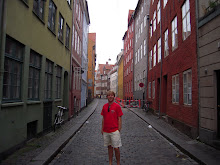Walter Benjamin, in “The Work of Art in the Age of Mechanical Reproduction”, states the following:
“Even the most perfect reproduction of a work of art is lacking in one element: its presence in time and space, its unique existence of the place where it happens to be. The unique existence of the work of art determined the history to which it was subject throughout the time of its existence.”
This statement reminded me of the basic goals of Rea Tajiri’s documentary History and Memory. What Tajiri attempts to do is recreate what her parents’ experiences were like in a Japanese internment camp. However, all Tajiri has to work with is one sole memory, one image image, one detail her mother gave to her about the experience—the cupping of water and subsequent splashing on her face. It is up to Tajiri to flesh out the rest of the background story and create a truth with her narrative.
Though Tajiri is not “reproducing” a work of art—she is creating one—she has the same struggles that Benjamin lists here. Her work, no matter her efforts, cannot reclaim the “presence in time and space” her mother’s memory did. Nor can she herself return to that time, and have that “unique experience” her mother did. Tajiri’s work is as much about her desire to expose truth of what happened at the camps (and, thus, alert the public about the psychologically damaging effects of what took place) as it is a reflection about the painful truth of experience and the futility of fully recreating the past. Tajiri’s work reminds us why cameras exist in the first place: to try to capture those fleeting moments, to have some indication that they happened.
When Benjamin states that the “unique existence of the work of art determined the history to which it was subject”, his claims again match up with Tajiri’s work. Tajiri, in order to create a background to her parents’ pasts, researches the internment camps and provides clips of the films of the time that dealt with the issue. Tajiri shows the viewer how her parents and their existence were represented by the media of the time. Tajiri herself does this work for the viewer; she puts together all the layers that have been added to her parents’ story since then.
History and Memory features Tajiri taking a memory and creating a piece of art around it. Tajiri, in her work, then adds the history behind the art and shows how the story has evolved and changed, and, in her case, been misrepresented. Tajiri’s work also is a meditation on the act of filming and creating art and how these sort of creations affect memory and place individuals in history.
Friday, March 27, 2009
Subscribe to:
Comments (Atom)
